.jpg)
JOSEF HOFFMANN , AUFSATZ CENTREPIECE, CIRCA 1922 Christie's
Josef Hoffmann Serveware, Ceramics, Silver and Glass Austrian, 1870-1956 The Austrian architect Josef Hoffmann was a central figure in the evolution of modern design, and a leader in an aesthetic movement born in Europe in the late 19th century that rejected florid, extravagant ornamentation in favor of a new emphasis on simplicity of line.
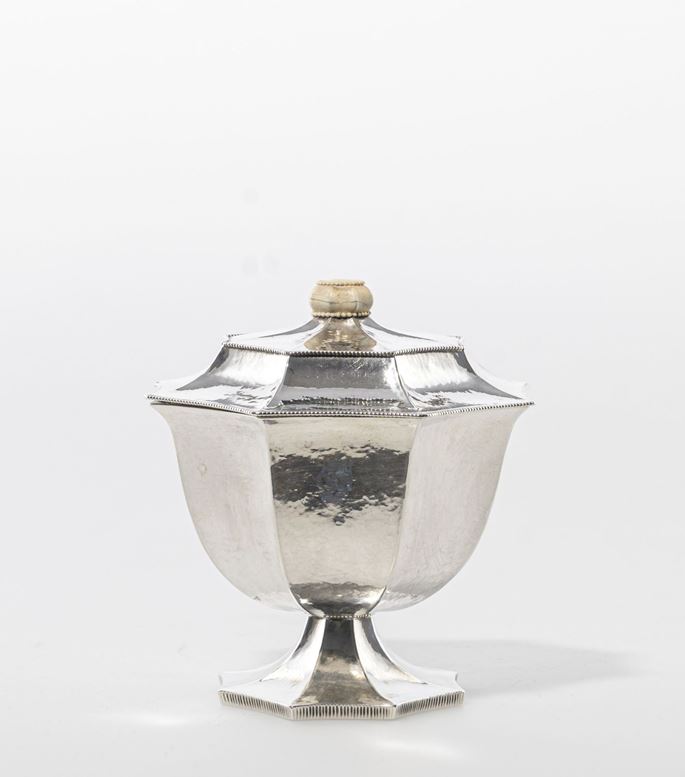
Josef Hoffmann SILVER TEA SET MasterArt
Free Shipping Recent Sales Get Updated with New Arrivals Save "Josef Hoffman Silver", and we'll notify you when there are new listings in this category. Save Search Josef Hoffman Silver For Sale on 1stDibs At 1stDibs, there are many versions of the ideal piece of josef hoffman silver for your home.

Josef Hoffmann Wiener Werkstatte Silver Centerpiece, 19221933 From a unique collection of
The clean lines of Josef Hoffmann's fine silver No.135 dinner fork reflect the revolutionary Modernist ethos of the Wiener Werkstatte movement he founded. Reissued from Hoffmann's 1902 design, it is handcrafted with vintage tools in the Vienna workshop - and still looks as fresh as it did a century ago. Please note, as this piece is made.

Josef Hoffmann / Wiener Werkstätte Silver paneled bowl Vienna Secession c. 1915 at 1stdibs
1905-10 Palais Stoclet Artist: Josef Hoffmann The Palais Stoclet represents the ultimate environment envisioned by the Wiener Werkstätte, as the cooperative received the commission during the brief period when Hoffmann had formally merged his architectural practice with the Werkstätte's activites.

Josef Hoffmann for Sonja Knips. Two silver pendants with different coloured opals, moonstones
Biography. Josef Hoffmann (1870-1956) was one of the premier Viennese proponents of the Gesamtkunstwerk, or "total work of art."A gifted and prolific designer of architecture, furniture, utensils, clothing, bookbindings, posters, textiles, and wallpaper, Hoffmann was convinced of the social and spiritual benefits of harmonious living environments designed by a single creative mind.
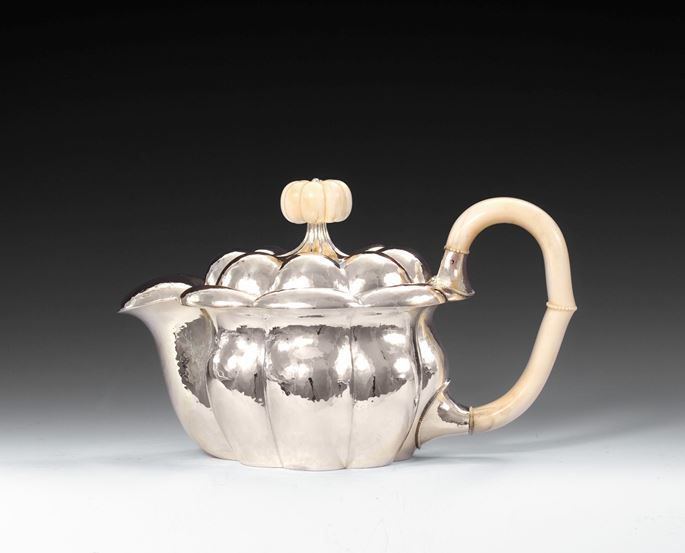
Josef Hoffmann / Wiener Werkstätte SILVER TEAPOT MasterArt
Hoffmann's extensive pantheon of designs is considered quintessentially representative of 20th-century architecture, and his contributions have been critically lauded for generations since his death in Vienna, Austria on May 7, 1956. Josef Hoffmann was an Austrian architect and industrial designer. View Josef Hoffmann's 3,972 artworks on artnet.
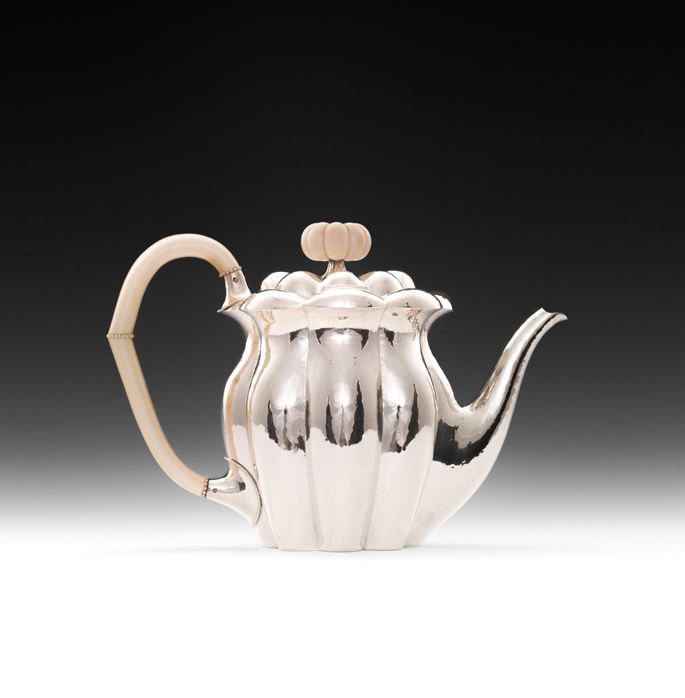
Josef Hoffmann / Wiener Werkstätte SILVER COFFEE POT MasterArt
Josef Hoffmann. Josef Hoffmann (b. Austria, 1870) has an oeuvre that embodies the seismic aesthetic and philosophical shifts defining avant-garde art and design at the turn of the 20th century. He was a founding member of the Vienna Secession and the Wiener Werkstätte, both organizations of artists and designers who sought to breakaway from.

Josef Hoffmann A Vienna Secession Silver Vase by Weiner Werkstätte
Designer Josef Hoffmann Austrian ca. 1910 On view at The Met Fifth Avenue in Gallery 910 This sugar bowl is part of a hand-beaten silver tea service designed for the Wiener Werkstätte. Co-founded by Josef Hoffmann in Vienna, this community of designers, artists, and craftsmen included Gustav Klimt, Josef Frank, and Egon Schiele.

Josef Hoffmann A Rare Silver Vase with Glass Insert by Josef Hoffmann for Wiener Werkstätte
Josef Hoffmann Helped to Define the Very Meaning of Modernism One of the Viennese Secession's brightest stars is back in the limelight, thanks to a comprehensive retrospective in the Austrian capital that unveils some rediscovered treasures. Photo: © MAK/Georg Mayer by Ralf Eibl

Josef Hoffmann Serveware, Ceramics, Silver and Glass 26 For Sale at 1stDibs
The clean lines of Josef Hoffmann's fine silver No.135 reflect the revolutionary Modernist ethos of the Wiener Werkstatte movement he founded. Reissued from Hoffmann's 1902 design, the cutlery is handcrafted with vintage tools in the Vienna workshop- and still looks as fresh as it did a century ago.
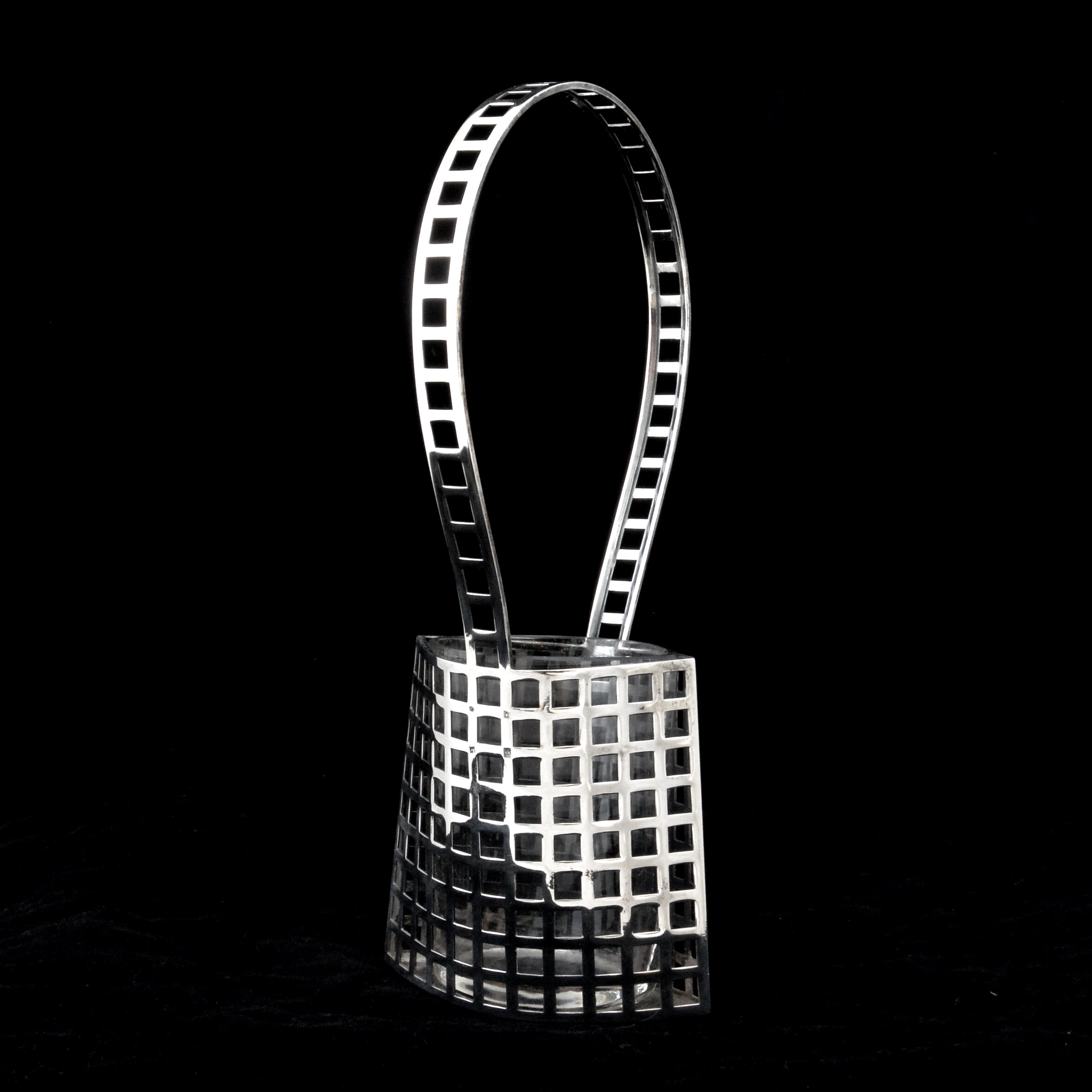
A Josef Hoffmann Wiener Werkstatte silver basket The Pear Tree Collection
Overview Inscriptions and Markings Provenance Exhibition History References Title: Tea service Designer: Josef Hoffmann (Austrian, Pirnitz 1870-1956 Vienna) Manufacturer: Wiener Werkstätte Date: ca. 1910 Medium: Silver, amethyst, carnelian, and ebony Dimensions: Various dimensions Classification: Metalwork-Silver
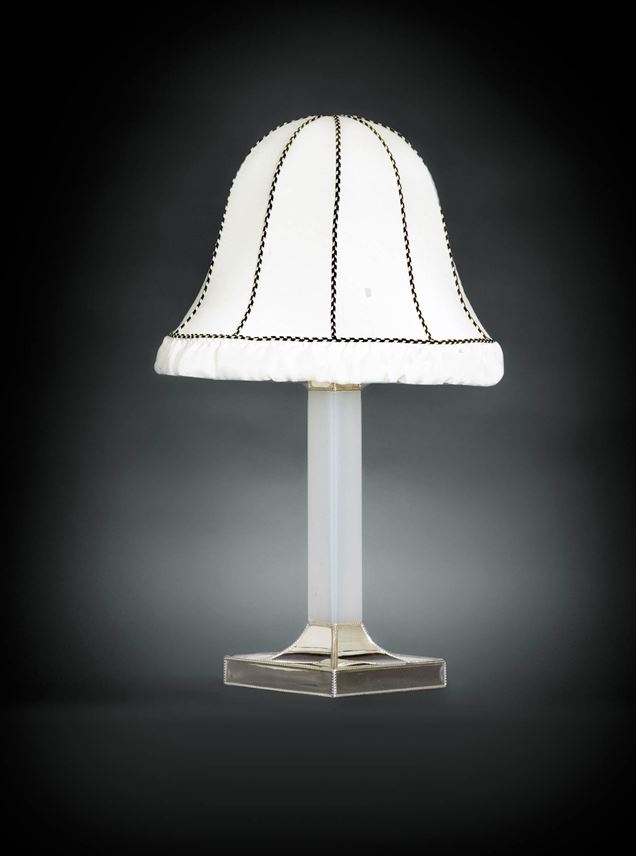
Josef Hoffmann / Wiener Werkstätte Silver Table Lamp MasterArt
JOSEF HOFFMANN (1870-1956) A Silver Vase, circa 1910 with glass liner 9½ in. (24.2 cm.) high stamped with JH monogram, WW, rose trademark, JF monogram for executing silversmith and Austrian silver hallmarks. Provenance. With Galerie Philippe Denys, Brussels. Special notice.
.jpg)
JOSEF HOFFMANN (18701956) , A SILVER TAZZA, CIRCA 1910 Christie's
Store Members Tickets Josef Hoffmann Flatware 1905 On view MoMA, Floor 5, 504 The Alfred H. Barr, Jr. Galleries Manufacturer Wiener Werkstätte, Vienna Medium Silver-plate on nickel silver Dimensions .1 (large knife): l. 8 1/2" (21.6 cm) .2 (small knife): l. 7 1/4" (18.4 cm) .3 (butter knife): l. 7 1/4" (18.4 cm) .4 (soupspoon): l. 8 1/4" (21 cm)

JOSEF HOFFMANN Fine silver bowl
Josef Hoffmann (15 December 1870 - 7 May 1956) was an Austrian - Moravian architect and designer. He was among the founders of Vienna Secession and co-establisher of the Wiener Werkstätte.

Josef Hoffmann SILVER TRUMPETSHAPED VASE MasterArt
1904 (made) The architect Josef Hoffmann, one of the founders of the Wiener Werkstatte in 1903, was also one of the principal designers of metal work produced in the workshops. His geometrical designs in silver, of which this fruit basket is an outstanding example, date primarily from the early years of the Wiener Werkstatte. Object details
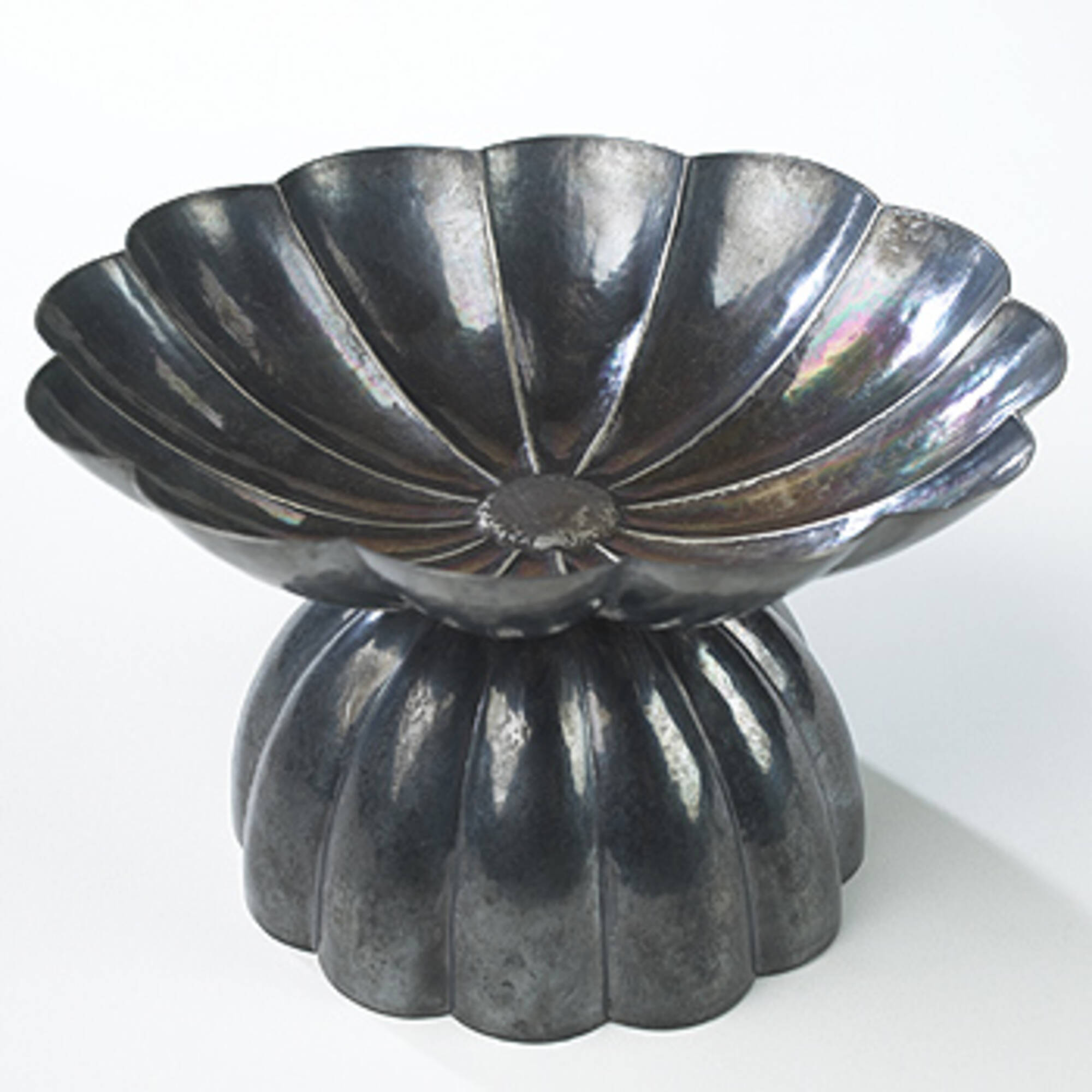
134 JOSEF HOFFMANN, silver centerpiece
In 1903, architect Josef Hoffmann and graphic designer Kolomon Moser (both Secession members), formed the WW and remained committed to the Secession's freedom, and openness to the new—but for utilitarian objects. Their endeavor was financially supported by the wealthy textile manufacturer Fritz Waerndorfer.